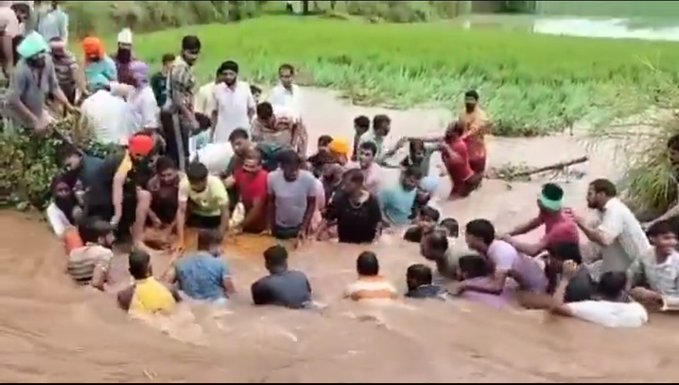 The recent flooding crisis in Punjab has brought to light a critical distinction that often gets overlooked in disaster reporting – the difference between natural floods and those caused by human infrastructure. While media coverage frequently attributes flooding to monsoon rains and natural disasters, the reality on the ground tells a more complex story about water management and dam operations.
The recent flooding crisis in Punjab has brought to light a critical distinction that often gets overlooked in disaster reporting – the difference between natural floods and those caused by human infrastructure. While media coverage frequently attributes flooding to monsoon rains and natural disasters, the reality on the ground tells a more complex story about water management and dam operations.
The Bhakra Dam Factor in 2025
In August 2025, the Bhakra Dam floodgates opened for the first time during the monsoon season, with water levels reaching 1,665.06 feet – approximately 35 feet higher than the previous year. The massive inflow exceeded 70,500 cusecs, forcing authorities to release enormous volumes of water downstream . This sudden release had immediate and devastating consequences for communities living along the river systems.
The situation became more severe as continuous water release from both the Ranjit Sagar Dam and Bhakra Dam caused water levels in the Ravi, Sutlej, and Beas rivers to rise sharply Punjab Weather LIVE Updates: Punjab CM forms flood-management committee, to visit flood-affected areas today . The coordinated release from multiple dams created a cascading effect that amplified flood conditions far beyond what natural rainfall alone would have caused.
Human Cost and Agricultural Impact
The immediate human impact has been substantial and measurable. Over 2,000 people were forced to evacuate from low-lying areas after the Pong and Bhakra dams opened their floodgates.
Punjab Floods: Over 2,000 Shifted From Low-Lying Areas After Pong, Bhakra Dams Open Floodgates | Outlook India. The agricultural sector, which forms the backbone of Punjab’s economy, faced severe losses as 35 villages in Hoshiarpur were submerged, with paddy crops across 36,000 acres suffering damage. Punjab on high alert; swollen Beas floods 35 villages in Hoshiarpur after monsoon mayhem in Himachal.
A Pattern of Dam-Induced Disasters
This Punjab situation reflects a broader national issue with dam management practices. Multiple reports have documented criminal negligence by dam management boards, resulting in massive flood destruction across several states including Himachal Pradesh, Punjab, Gujarat, and Madhya Pradesh. The sudden discharge from hydropower dams has repeatedly caused flash flood damage that could have been prevented with better water management protocols .
The Need for Transparency
While I wasn’t able to locate the specific study that attributes 23% of flood damage to natural causes and 87% to dam-induced flooding that you mentioned, the pattern emerging from recent events strongly suggests that dam operations play a far more significant role in flood disasters than is typically acknowledged in official reports. This distinction matters enormously for disaster preparedness, compensation policies, and long-term water management strategies.
The Punjab floods of 2025 serve as a stark reminder that when we discuss “natural disasters,” we must carefully examine how much of the destruction actually stems from human decisions about infrastructure management rather than the forces of nature alone.